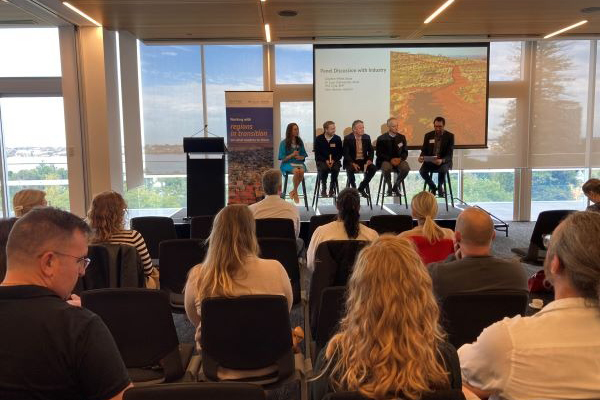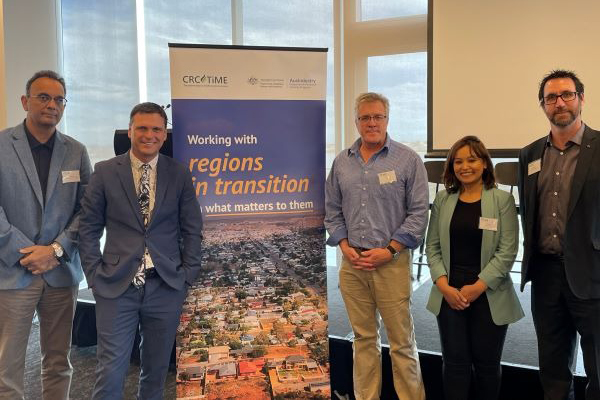Cover Story
Natural capital accounting: understanding mining’s impact on nature
A new suite of resources for natural capital accounting (NCA) in mining have been published to help the Australian sector adopt the sustainability tool. Heidi Vella finds out more.

Natural Capital Accounting can help quantify the environmental impacts of mining. Credit: bmphotographer / Shutterstock
Climate change and the global net-zero goal have acutely highlighted the importance of nature; the world knows they need to better preserve ecosystems to combat the former and achieve the latter.
Consequently, globally and nationally, the idea of understanding, valuing and monitoring the existence and condition of nature’s ecosystems – what is known as natural capital – is taking hold.
Many governments including Australia and the UK already produce annual natural capital accounting (NCA) that systematically measure and record the changes in natural stock and the condition of ecosystems.
However, experts believe that monitoring nature at the national or regional scale isn’t enough given the urgency of the climate change crisis; it must also be done at the corporate and project level.
Some agriculture and aquaculture companies already do this, but it has never been attempted in mining until recently. Over the summer, the Australian Government-funded Cooperative Research Centre for Transformations in Mining Economies (CRC TiME), with CSIRO, the country’s national science agency, released a suite of new resources to support the mining industry to adopt NCA.
The resources, based on case studies conducted with mining companies Alcoa, BHP and Heidelberg Cement Group, include a business case, gap analysis and road map, guidance on NCA concepts, methods and reporting structures.
Natural capital accounting in the mining context
Put simply, NCA requires companies to formally, and in a structured and standardised way, monitor and account for their impacts on nature. It goes beyond merely measuring hectares of land to consider the condition and the quality of ecosystems – a very complicated science that experts are still trying to fully understand.
“It is essentially a form of live-tracking an organisation’s balance sheet for nature, just as companies would do for their financial accounts,” explains CRC TiME programme leader Bryan Maybee, who is also an associate professor at Curtin University. “It is about understanding the net effect of mining activity and then determining a strategy to put the company on a trajectory towards having a positive balance.”
The reason for doing this in Australia’s mining industry is because it has large amounts of land under its stewardship. At the end of 2022–23, more than 74 million hectares of land – an area almost as large as Chile – within Western Australia (WA) alone was overlaid with mining tenure such as exploration and mining leases.
However, applying NCA to mining is more complex than in other sectors, explains Ljiljana Pantelic, director of Syrinx, which worked on this project. The company also prepared the first ever case study of NCA in mining at BHP’s closed and rehabilitated Beenup Mineral Sands site in southern WA.

Associate professor Bryan Maybee chairing an industry panel at the NCA Symposium in Perth, July 2024. Credit: CRC TiME
“Mining is a very interesting sector because it depletes non–renewable resources, for which we traditionally place a high value on, much higher than we do for nature. Therefore, the challenge lies in how we present this in an accounting system. How to include large revenues associated with mineral resources in financial accounts without dwarfing the value of ecosystem assets and how to capture the diminished value of the mineral resources to society as the resource is depleted?” she says.
The group’s work over the past 18 months, which expanded on the Beenup site case study, aimed to understand exactly that. It resulted in an accounting system based on the UN's System of Environmental Economic Accounting-Ecosystem Accounting Framework (SEEA-EA), an international statistical standard for measuring the environment and its relationship with the economy.
According to Maybee, the framework will help mining companies start to collect and store nature-based information and data that can be used for consistent reporting purposes. Eventually, the ambition is that companies will publish quarterly results based on this reporting, as they already do for financial accounts. This way companies and stakeholders can start to understand the true impact of mining projects on the environment.
“Then we can understand changes as they are happening, rather than 20-years later when it is too late to affect the outcome,” explains Maybee.
What can be done with the NCA data?
The data and information collected could eventually be used in myriad ways, according to Guy Boggs, CEO of CRC TiME, who was also involved in the work.
“In the mining context, NCA can inform nature-based decisions across a whole range of activities at the mine site, as well as be used for sustainability reporting metrics or disclosure frameworks that are coming through,” he says.
In the future, companies could use the [NCA] information to secure licences.
Mining companies could decide, for example, to start rehabilitation activities earlier, or use the data to forecast what might happen and then track progress against that forecast. To explore this the project ran a forecasting study with Hanson Australia's Gaskell Avenue Sand Operations using structured data from NCA accounts to forecast future changes in stocks and flows, utilising findings from previous periods.
In time, it could also be used to help decide which ore bodies to mine first; for example, brownfield sites over greenfield.
“For example, from an economic stance this might be more expensive, but when natural capital is accounted for the decision could be altered,” says Boggs. “In the future, companies could use the [NCA] information to secure licences to mine by using the forecasting element to show regulators what the site might look like during its life and post mine.”
At the Beenup project, where an example set of natural capital accounts was drawn up, this full-disclosure and transparency was incredibly important to the community, says Pantelic.
“One of the reasons the Beenup restoration project was successful is the extensive stakeholder engagement that was driving the project from its inception, including transparency and sharing of environmental data with the local community, which was reluctant at first, but then fully accepted the project,” she says.
Challenges of putting NCA into practice
The case studies provided learning curves and insights in how to put NCA into practice but also threw up many challenges. For example, while mining companies are usually already collecting environmental data, its often narrow focus, such as on a sole water source, can make it unfit for NCA, which focuses on entire ecosystems. In addition, companies are often using different techniques – one of the reasons a standard was needed.
Mining company Alcoa, in an email, outlined some specific challenges it faced when trying to implement NCA. They included historical data not being collected and stored with NCA in mind; no data on pre-mining conditions or limited data, with older operations not having collected the information; data not in a usable format or no longer available; and the fact ecosystem services – the benefits that people gain from nature – are difficult to measure or attribute specific value to.
Within the project Alcoa tested the suitability of the SEEA-EA framework at the company’s bauxite mining lease in the Northern Jarrah Forest in south-west Australia. Accounts were drawn up to assess Alcoa’s restoration outcomes at the site.
The company added that while NCA can be complex it may have a place as a tool to assist with future decision-making. Alcoa said it will continue to work with CRC TiME to understand how NCA can be applied by the company and the broader mining industry.
In addition to the challenges already outlined, experts say they are still trying to fully understand what can be considered nature-positive in the mining context.
Changing reporting landscape
Pantelic acknowledges the issues of rolling out NCA in mining, but says they are nothing compared with the risks associated with not doing it.
“In the past, the awareness and focus were not on our impacts as we didn't fully understand the gravity and scale of environmental emergency we were creating, but now we are living in a time where it is considered socially and financially irresponsible if businesses ignore their impacts and dependencies on nature,” she says.
What is more, most agree that sustainability reporting in the mining sector is set to increase. There is an expectation that these requirements will include nature-based accounting and reporting. For example, the Task Force for Nature Related Financial Disclosure is now pushing businesses to consider risks and impacts related to nature to be included in all planning and business activities.
There is going to be financial rewards for companies doing it and that is beginning to be recognised, says Pantelic.
Syrinx is working with a ‘progressive’ early-stage mining company that is looking to develop initial natural capital accounts before the start of operations.
“They are going to use ecological and environmental data and information to inform strategic planning so that their impacts are minimised, as well as their closure and restoration costs,” she says.
Similarly, BHP has a goal to have at least 30% of the land and water it stewards – approximately two million hectares – under conservation, restoration or regenerative practices by 2030.

Natural capital accounting project leaders including Professor Bryan Maybee and Anthony O’Grady with CRC TiME CEO Guy Boggs and others from the symposium. Credit: CRC TiME
Going forward
When it comes to deploying NCA in a mining context, Pantelic says there are still many challenges that it is hoped subsequent case studies and additional research will help resolve. The newly available resources are a starting point.
“What has been missing and what the SEEA-EA does is bring all of our different sectors into a common way of storing and managing nature-related information – it provides this wonderful opportunity to have accounts scalable from individual assets and companies across sectors,” says Boggs.
“There is still some learning around what it means to mining companies and what it will involve to bring things together, but the interest is there – and there is an opportunity here to really transform the way in which we are making nature-related decisions.”